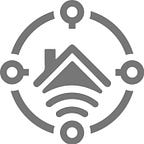Sustainability is not a choice, it is a responsibility that each one of us holds
The latest practices of sustainability are signing up businesses and industries of all types and sizes to turn to efficient data systems. The ultimate agenda to get there is becoming energy efficient, using renewables to cut down energy costs and increase ROIs. Businesses today thrive to make their operations green, with the help of digital disruptive tools such as the Internet of Things (IoT).
Role of Data Centres
Data centres play an important role in modern IT operations everywhere. They encase an enormous amount of sensitive data for businesses and consumers, which makes them rely on large amounts of energy consumption. Any glitch in a data centre can mean stops in an enterprise’s operational continuity. Therefore, integrating IoT technologies for performing data functions can improve efficiency and remove lags.
How does IoT help in achieving energy efficiency?
Data centres are considered to be the most energy-intensive buildings. They consume 10 to 50 times more energy per floor than your usual office building. Hence, to attain energy efficiency and sustainability goals on a global level, it is important to begin at data centres. Increasing demand from the public is leading to exponential growth in the number of data centres worldwide, which accelerates the need for more energy efficiency.
Applications of IoT technology in Data Centers
Although the current running of data centres does not fully satisfy the environmental demands, adopting IoT technology would be a potential solution. Ways to integrate IoT for energy efficient data centres:
Temperature and Humidity Monitoring
Since data centres work 24/7, temperature and humidity management is essential to prevent overheating of systems. IoT application protects the equipment, increasing its efficiency via predictive maintenance and condition based monitoring. Besides, a building’s HVAC monitoring can also be undertaken with the help of IoT sensors placed in the facility.
Smart Lighting
IoT-supported smart lighting systems can be deployed to save energy in data centres. These systems can switch on and off based on motion or sound, which helps cut down energy costs and inculcate sustainability.
Remote Monitoring
IoT-based sensors make the process of monitoring from remote locations feasible and energy-efficient. Data centres are vigorous and depend on uninterrupted power supplies where IoT integrated devices can maintain a reliable power source. IoT sensors detect early signs of warnings and can set thresholds according to various parameters, saving excess costs on maintenance.
Leak Detection
Data centres contain networked computers, their components, and storage facilities. A slight water leak can destroy these centres leading to repercussions. IoT sensors can be relied upon for timely detection of any leaks, and prevention alarms & alerts. Recovery after a leak can also be managed with the use of these sensors, with smart notifications via remote apps.
Key takeaway: Data centres take up a lot of energy for their active maintenance. So, a sustainable change in the sector can influence major factors such as energy efficiency to a greater extent.
Enconyx works towards such disruptive, innovative tools to bring sustainability to buildings. Interested in what we’re talking about? Visit us at www.enconyx.com today.
